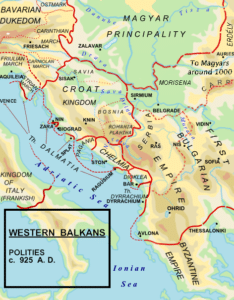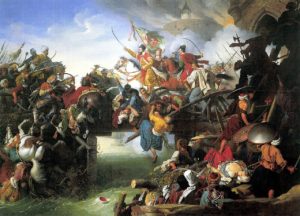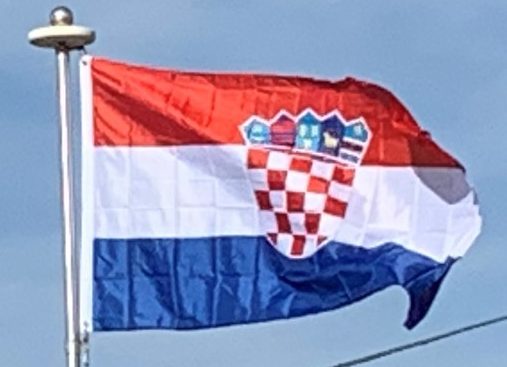The Frankish overlordship ended during the reign of Mislav two decades later. According to the Constantine VII Christianization of Croats began in the 7th century, but the claim is disputed and generally Christianization is associated with the 9th century. The first native Croatian ruler recognised by the Pope was Duke Branimir, who received papal recognition from Pope John VIII on 7 June 879.

Tomislav was the first king of Croatia, styled as such in a letter of Pope John X in 925. Tomislav defeated Hungarian and Bulgarian invasions, spreading the influence of Croatian kings. The medieval Croatian kingdom reached its peak in the 11th century during the reigns of Petar Krešimir IV (1058–1074) and Dmitar Zvonimir (1075–1089). When Stjepan II died in 1091 ending the Trpimirović dynasty, Dmitar Zvonimir’s brother-in-law Ladislaus I of Hungary claimed the Croatian crown. This led to a war and personal union of Croatia and Hungary in 1102 under Coloman.
For the next four centuries, the Kingdom of Croatia was ruled by the Sabor (parliament) and a ban (viceroy) appointed by the king. The period saw increasing threat of Ottoman conquest and struggle against the Republic of Venice for control of coastal areas. The Venetians gained control over most of Dalmatia by 1428, with exception of the city-state of Dubrovnik which became independent. Ottoman conquests led to the 1493 Battle of Krbava field and 1526 Battle of Mohács, both ending in decisive Ottoman victories. King Louis II died at Mohács, and in 1527, the Croatian Parliament met in Cetin and chose Ferdinand I of the House of Habsburg as new ruler of Croatia, under the condition that he provide protection to Croatia against the Ottoman Empire while respecting its political rights. This period saw the rise of influential nobility such as the Frankopan and Zrinski families to prominence and ultimately numerous Bans from the two families.
Habsburg Monarchy and Austria-Hungary:
Following the decisive Ottoman victories, Croatia was split into civilian and military territories, with the partition formed in 1538. The military territories would become known as the Croatian Military Frontier and were under direct Imperial control. Ottoman advances in the Croatian territory continued until the 1593 Battle of Sisak, the first decisive Ottoman defeat, and stabilization of borders. During the Great Turkish War (1683–1698), Slavonia was regained but western Bosnia, which had been part of Croatia before the Ottoman conquest, remained outside Croatian control. The present-day border between the two countries is a remnant of this outcome. Dalmatia, the southern part of the border, was similarly defined by the Fifth and the Seventh Ottoman–Venetian Wars.

The Ottoman wars instigated great demographic changes. Croats migrated towards Austria and the present-day Burgenland Croats are direct descendants of these settlers. To replace the fleeing population, the Habsburgs encouraged the Christian populations of Bosnia to provide military service in the Military Frontier. Most of the transferred population were Orthodox Vlachs (a term used for a community of mostly Orthodox refugees, mainly Serbs) and the peak of transferring was during the 16th century.
